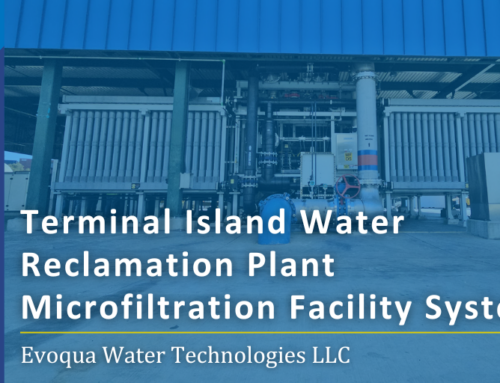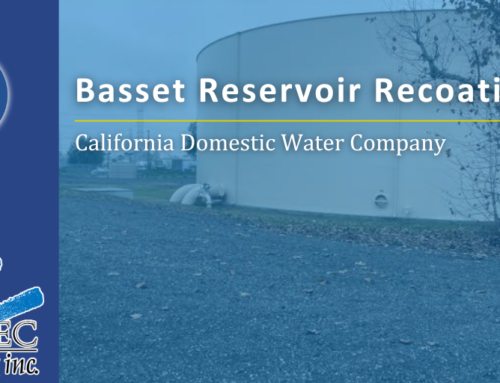Each year, California experiences two or three earthquakes of a magnitude of 6.0 or higher and with decades of experience, California’s officials have learned to build their cities with earthquakes in mind. We’ve retrofitted our bridges, dams, and skyscrapers all to withstand quakes registering well above 6.0, but to date our seismic engineering of water resources infrastructure has been lagging behind.

Damaged water tank.
Consider that a 6.0 earthquake releases about the same amount of energy as 6,270 tons of TNT – energy that is spread out in waves along the ground. When an earthquake hits a water tank, the steel structure shakes and the water inside begins to slosh around. To assure that the water contained inside tank is available to serve emergency needs in the aftermath of the earthquake, the tank must be able to withstand the combined impact of the ground shaking and the wave inside the tank crashing against its walls and roof. It’s no small task.
To ensure the safety of Californians and to protect the environment, the California Accidental Release Prevention program (CalARP) has issued guidelines regarding design parameters for water storage tanks. CalARP’s solution, which has become the standard across the state, was to require that tanks be constructed in such a way that sloshing waves are completely contained within the tank’s freeboard (the space between the water surface and the roof). Unfortunately, in the case of potable water, this solution has undesirable side effects on water quality, system capacity, and corrosion prevention.
Of course, where there’s room for improvement, there are bound to be engineers somewhere doing calculations.
A team at Civiltec Engineering is currently working on a better solution to the challenge of designing for seismic forces in water storage tanks. Lead by engineer Anthony Herda, P.E., their innovation will reduce construction materials, improve water quality, maximize system capacity, and reduce corrosion, all while satisfying the established CalARP requirements for water tank integrity. In addition, the design approach applies to retrofit of existing water tanks resulting in a longer infrastructure life cycle, lower maintenance costs and maximization of storage capacity.
A cylindrical steel potable water tank with the new specifications has already been implemented in California, and has been tentatively approved by the California Department of Public Health pending final design. The eventual owner of the tank plans to incorporate the approach into their official design standards for all future water storage tank construction.
Mr. Herda was invited to present his white paper on this innovative design approach (titled “Approach to Cylindrical Steel Tank Design to Accommodate Sloshing Effects”) at ASCE’s World Environmental and Water Resources Congress 2013 at the Duke Energy Convention Center in Cincinnati, Ohio this past May
As water travels ever-increasing distances to Southern California, its storage and preservation is becoming more and more important. Given that 70% of California’s population lives within 30 miles of a fault where significant seismic activity could occur in the next 50 years, new water tanks throughout the state in the coming years are likely to include Civiltec’s innovative design approach.



